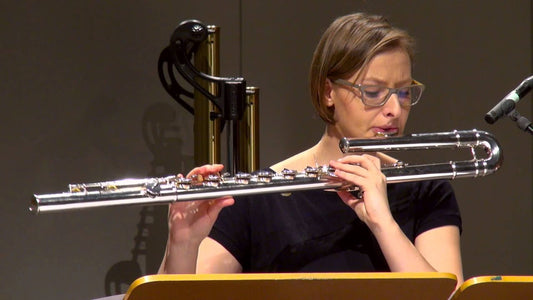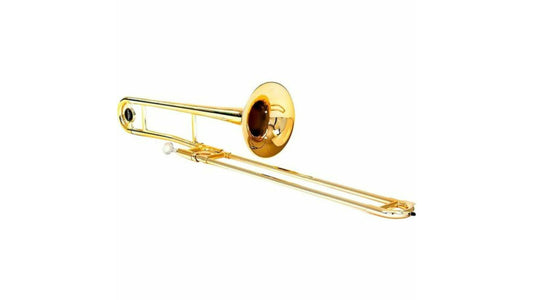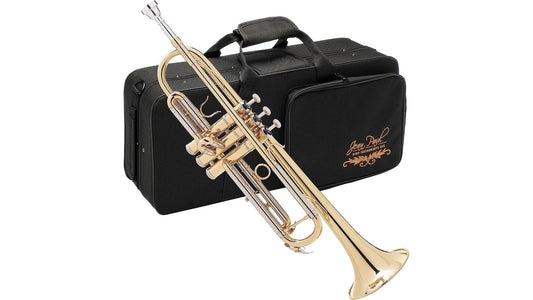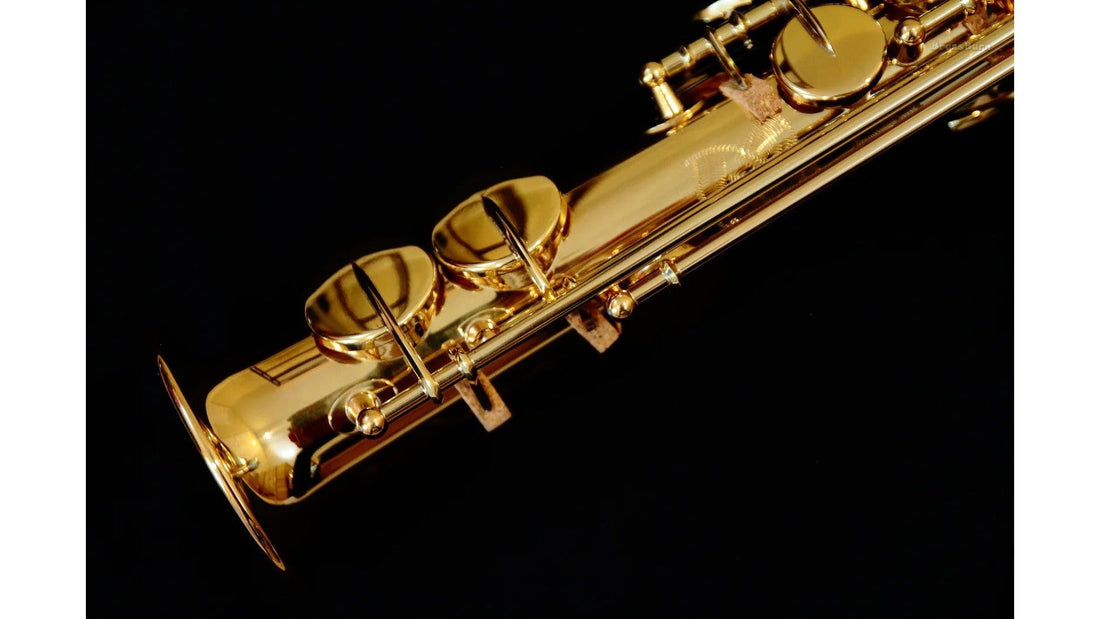
Hướng dẫn về Saxophone Sopranino
Trong khi chắc chắn có bốn loại saxophone chính, một số loại bổ sung (cả lớn hơn và nhỏ hơn) được thấy ít hơn, bao gồm cả saxophone sopranino hấp dẫn mà chúng ta sẽ nói đến trong bài viết này…
Khi nói đến saxophone, mọi người đều nghĩ đến soprano, alto, tenor và baritone.
Nhưng hãy lấy soprano và thu nhỏ nó thêm một chút nữa, bạn sẽ có chiếc saxophone sopranino, loại nhỏ thứ hai trong họ sax, chỉ sau soprillo.
Trong lịch sử saxophone, Adolphe Sax đã nhận được bằng sáng chế cho nhạc cụ này vào năm 1846, trong đó liệt kê 14 biến thể.
Bộ sưu tập ban đầu bao gồm Eb sopranino, F sopranino, Bb soprano, C soprano, Eb alto, F alto, Bb tenor, C tenor, Eb baritone, Bb bass, C bass, Eb contrabass, F contrabass và Bb sub -contrabass – mặc dù không phải tất cả những loại này đã từng được chế tạo.
Nếu chúng ta xem xét các nhà sản xuất saxophone nổi tiếng nhất trong lịch sử, họ bắt đầu sản xuất sax sopranino vào đầu/giữa những năm 1920.
Đầu tiên là mô hình True Tone của Gus Buescher vào năm 1922, theo sau là CG Conn's New Wonder – sê-ri I và Selmer Paris's Modele 26.
Mặc dù sopranino đã được sử dụng trong nhiều tình huống nhưng nó chưa bao giờ trở thành âm nhạc chính thống.
Ví dụ, cách biểu diễn của các ban nhạc swing có nghĩa là hầu hết các nhà sản xuất Mỹ tập trung vào các mẫu saxophone alto, tenor và baritone.
Có lẽ nổi tiếng nhất, Ravel's Bolero (viết năm 1928) ban đầu được gọi là saxophone sopranino nguyên bản (ở phím F) và thường được biểu diễn trên saxophone Eb sopranino hoặc Eb alto hiện đại.
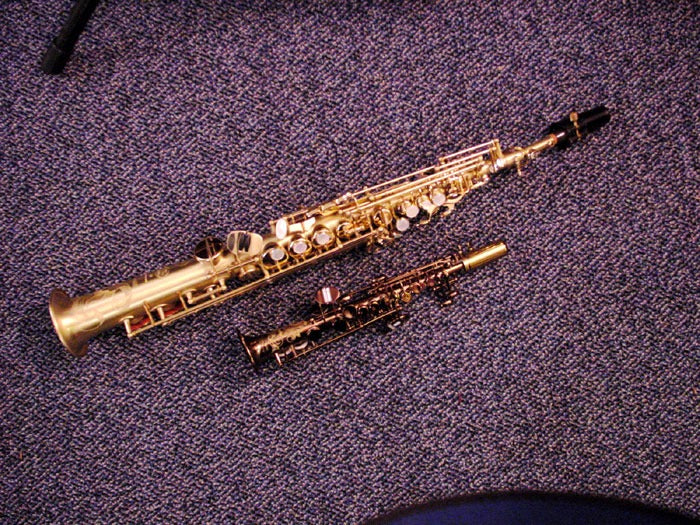
Chơi Kèn Saxophone Sopranino:
Sopranino là nhạc cụ chuyển giọng.
Như với saxophone alto (thấp hơn 1 quãng tám) và saxophone baritone (thấp hơn 3 quãng tám), chúng ở âm Eb.
Về cao độ, chúng chỉ bị đánh bại bởi saxophone soprillo, ở Bb, và âm thanh cao hơn một quãng tám so với saxophone soprano.
Mặc dù kèn sopranino có thể là một loại kèn có âm thanh rất ngọt ngào trong tay các chuyên gia, nhưng kích thước nhỏ của ống ngậm và lưỡi gà đòi hỏi cơ mặt khỏe và trình độ chuyên môn cao.
Dăm kèn saxophone sopranino có sẵn từ hầu hết các nhà sản xuất lớn (Vendoren, Legere, Alexander…) và sử dụng cùng một phạm vi độ dày như những loại khác.
Tương tự như vậy, ống ngậm sopranino chỉ đơn giản là một phiên bản nhỏ hơn của các đối tác trong gia đình của nó - mặc dù bản thân nó có thể khó cầm hơn.
Saxophone Sopranino ngày nay
Ngày nay, sopranino không phải là loại saxophone được sử dụng phổ biến nhất mà chúng có sẵn từ hầu hết các thương hiệu saxophone lớn (Selmer Paris, Yanagisawa, P. Mauriat, Rampone & Cazzani, v.v.)
Do kích thước nhỏ của chúng, sopranino thường thẳng, mặc dù các nhà sản xuất người Ý Rampone & Cazzani và Orsi đã tạo ra các phiên bản cong.
Nói chung, về mặt âm học, các sopranino lên đến E cao (ví dụ SN-981 của Yanagisawa), mặc dù một số trong số chúng được nhấn ở F # cao như hầu hết các loại sax hiện đại khác.
Tuy nhiên, với âm vực cực kỳ cao của chúng, một vài nốt đầu bổ sung này là không cần thiết!
Các nghệ sỹ chơi saxophone sopranino
Mặc dù rất hiếm (hoặc thậm chí là chưa từng thấy theo kinh nghiệm của chúng tôi) để tìm được một nghệ sỹ chủ yếu chơi sopranino, nhưng nhiều người sử dụng nó như một phần bổ sung.
Với âm thanh cao bất thường, nó được sử dụng phổ biến hơn trong nhạc jazz bởi nhạc jazz tự do và những người chơi tiên phong như Anthony Braxton.
Wess Anderson từ Wynton Marsalis Septet và Jazz At The Lincoln Center Orchestra thường chơi sopranino.
Nếu những thách thức kỹ thuật và những nốt cao vút không làm bạn nản lòng, chúng tôi khuyên bạn nên thử loại nhạc cụ hiếm nhưng hấp dẫn này!
Như nhiều người chơi đã phát hiện ra, thật thú vị khi chơi 'nino!
Và, nếu bạn đang tìm kiếm thứ gì đó truyền thống hơn một chút, hãy xem hướng dẫn của chúng tôi về saxophone tenor hoặc kèn saxophone .


